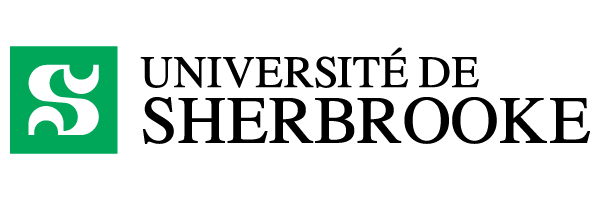The lockdown, forced telework, work-life conflicts, job loss and work overload are all sources of stress that workers have been exposed to since the start of the pandemic and that jeopardize their mental health. More than ever, employers, managers and employees need to unite to fight this other invisible epidemic. How can we make it through this difficult period without sacrificing our mental health?
OUR PARTNERS
This initiative was made possible through a collaboration with the Université de Sherbrooke and is supported by the Chief Scientist of Québec, with the Fonds de recherche du Québec.


Legend : Recommendations from our PH.D student
PH.D STUDENT
Camille Roberge is a doctoral candidate in organizational psychology (Ph.D. R/I) at the Université du Québec à Montréal. Her thesis concerns self-management strategies used by workers exhibiting symptoms of anxiety or depression.
WHAT IS MEANT BY:
An unpleasant emotion provoking physical symptoms (e.g. increased heart rate, laboured breathing, excessive perspiration, trembling, dizziness, clammy hands, muscle tension) and intrusive thoughts (e.g. worries, ruminations, obsessions, doubts, fears). Symptoms of anxiety, even mild ones, can negatively affect a worker’s functioning.
A mental health disorder characterized by a loss of pleasure and a sad mood sustained for several weeks, generally accompanied by negative thoughts, low self-worth or excessive guilt, that can sometimes lead to suicidal ideation. Depression can cause sleeping problems, an increase or loss of appetite or a loss of concentration, energy, interest or motivation. Symptoms of depression, even mild ones, can affect a worker’s functioning.
To benefit from optimal workplace functioning, a certain level of recovery is necessary. This includes five dimensions:
- clinical (e.g. a reduction in symptoms or a better ability to manage the condition);
- functional (e.g. returning to normal functioning, i.e. the same as before the appearance of symptoms);
- existential (e.g. being satisfied with life);
- social (e.g. having social contacts);
- physical (e.g. having a healthy lifestyle).
Behaviours adopted by an individual affected by a mental health disorder (e.g. symptoms of anxiety or depression) in order to manage their symptoms on a daily basis, optimize their health and prevent relapses (e.g. learning when and how to have discussions with one’s immediate supervisor to inform them of their needs). These strategies allow the worker to exercise more control in managing their symptoms and facilitate job retention by acting as protection factors.
WHAT DO THE RESULTS OF TWO STUDIES SHOW?
1. Certain self-management strategies are more effective for managing symptoms of anxiety or depression at work, and these should target the five complementary dimensions of recovery.
- Setting limits on the amount of time and energy I can devote to work | Functional dimension
- Maintaining work/life balance | Physical dimension
- Thinking about my surroundings and my working conditions to identify sources of stress | Clinical dimension


